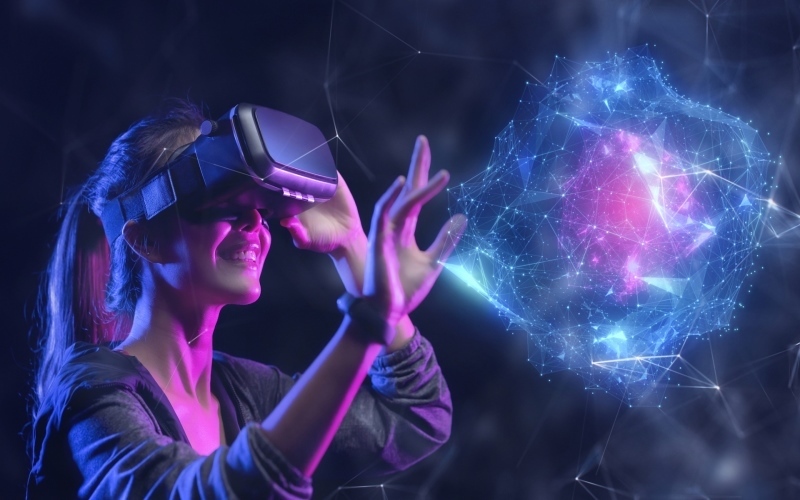Virtual reality, as an idea, predates silicon chips. Mid-twentieth-century inventors sketched clunky head-mounted displays, hoping to fool the brain with stereoscopic slides. Those crude goggles made people dizzy, but they proved one thing: eyesight is hackable. Engineers kept tinkering, swapping spinning motors for micro-sensors, until the dream of walking through a digital room felt less like science fiction and more like a stubborn engineering problem waiting to be solved.
From Arcade Novelty to Living-Room Staple
Headsets once sat alongside pinball machines, swallowed quarters, and called it a day. Now they ship in pizza-box packages and plug into gaming consoles without tools. During quiet loading screens many users even drift into browser tabs to check deals or watch a quick lightning dice live session before snapping the visor back down. The journey from coin-op sideshow to couch-friendly appliance happened fast — so fast that regulators still struggle to draft rules for worlds nobody physically visits.
Hardware: Headsets Get Serious
Today’s goggles ditch the wires, pack 4K panels per eye, and track tiny pupil movements to shave rendering loads where the retina never notices. Inside-out cameras map the living room in milliseconds, turning coffee tables into invisible boundaries. Battery life remains the bottleneck; thermal limits lurk close behind. Yet each hardware cycle — thinner lenses here, wider sweet spots there — shrinks the gap between “almost convincing” and “forget you’re wearing plastic on your face.”
Input and Haptic Tricks
Pointer wands are giving way to subtler gear:
- Finger-tracking gloves read tendon twitches, letting users type mid-air without dragging keyboards into the headset view.
- Force-feedback vests slam a soft punch into the rib cage when a virtual ball strikes, translating pixels into muscle memory.
- Shoe inserts vibrate in sync with gravel crunch, tricking the brain into feeling terrain shifts on a flat floor.
Those layers of feedback don’t just add realism; they prevent motion sickness by aligning vision with touch.
The Software Ecosystem Blossoms
App stores now stock more than zombie shooters. Architects host client walk-throughs inside half-built towers; therapists guide phobia patients across glass bridges no one must actually cross. Developer kits push updates weekly, and indie studios ride those updates to prototypes that jump from side-project to smash hit overnight. Every successful title teaches the same lesson: presence beats polish. If code convinces the inner ear, frame-rate hiccups get forgiven.
Education and Training in Headset Land
Classrooms and job sites adopt VR for reasons that have nothing to do with play:
- Medical simulation. Students practice rare procedures on infinitely resettable mannequins.
- Industrial safety drills. Trainees walk inside a virtual refinery, learning to respect valves before touching a real one.
- Language immersion. Learners negotiate market prices with AI shopkeepers who never grow impatient.
- Historical recreations. Pupils tour ancient cities reconstructed from archaeological scans, guided by avatars of actual researchers.
Each use case trades chalk-dust or printed manuals for embodied experience—the brain’s favorite teacher.
Health, Wellness, and the 30-Minute Rule
Repeated headlines warn about headset fatigue, myopia risk, and the “VR face” imprint left by tight straps. Most issues shrink when sessions stay short and lighting remains gentle, yet parental guides still advise breaks every half hour. On the upside, fitness apps convert living rooms into boxing studios, logging calorie counts that rival treadmills. For rehabilitation patients, low-impact balance games often beat dull stretches by making therapy feel like after-school arcade time.
Ethical and Social Puzzles
When an avatar’s hand passes through a stranger’s personal space, does it count as harassment? Moderators scramble for precedents while philosophers dust off papers about embodiment. Data-collection worries deepen: eye-tracking metrics reveal emotional states more plainly than keystrokes ever did. And what becomes of public squares if everyone can summon private worlds at will? VR’s promise arrives strapped to a backpack full of social questions heavier than the hardware itself.
Looking Ahead: Mixed Realities Converge
Engineers now chase “pass-through” headsets — devices that blend camera feeds with holographic overlays so seamlessly that users may forget which objects are real. Cloud rendering pushes high-fidelity scenes from distant GPUs, leaving local processors to handle only low-latency tracking. As broadband expands, even budget headsets could stream blockbuster visuals. Eventually the term “VR” may dissolve, replaced by a continuum where phone screens, smart glasses, and full visors all dip into the same persistent 3-D canvas.
Closing Thoughts: A Moving Target
Virtual reality refuses to sit still long enough for a tidy definition. It started as a parlor trick, mutated into a gamer’s splurge, and now creeps into workplaces, gyms, and therapy clinics. Each new lens coating or tracking algorithm nudges the medium closer to its impossible goal: fool every sense, all the time. Whether that dream ever fully lands is less important than the experiments along the way — because each experiment changes how people imagine space, story, and even self.
